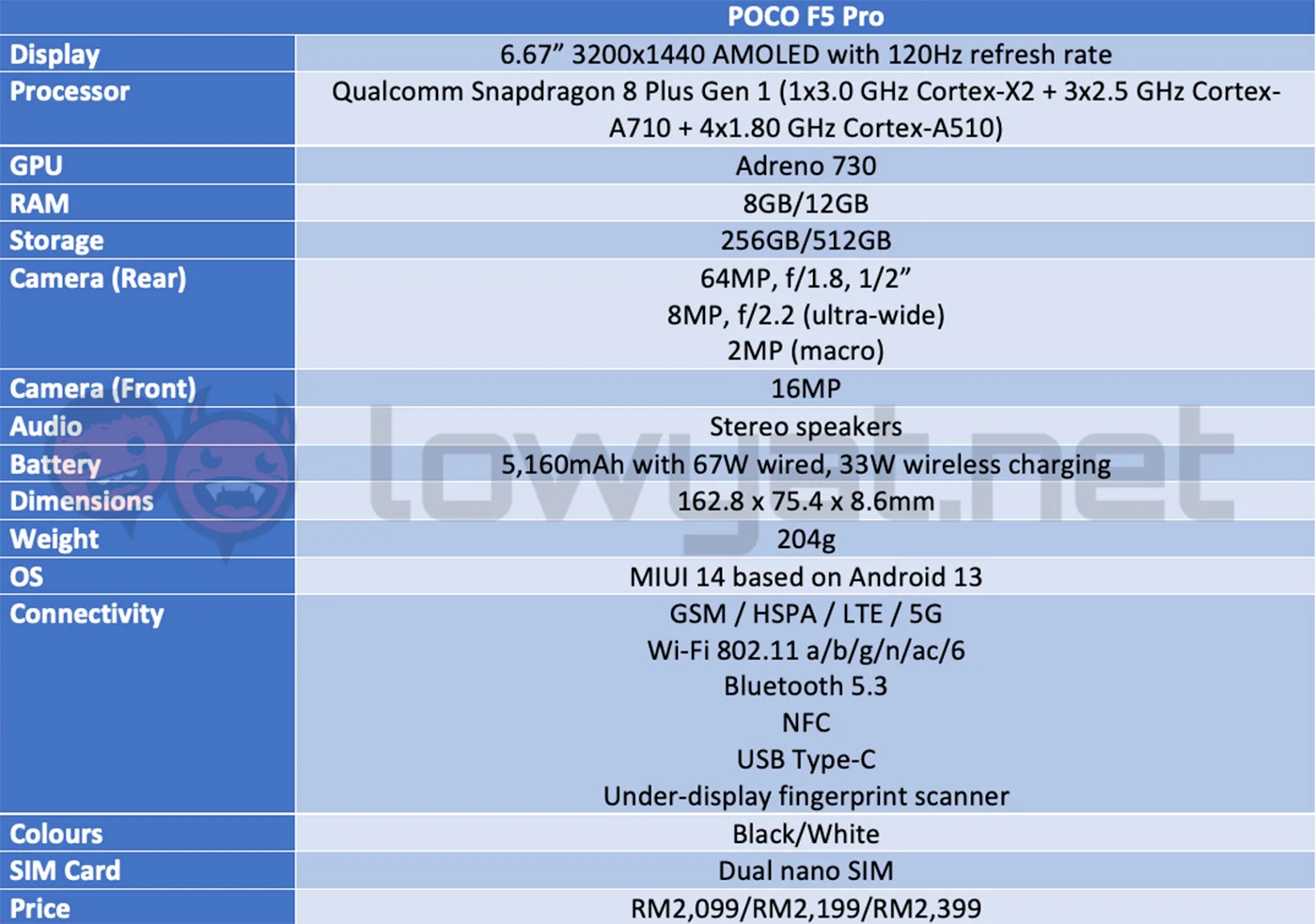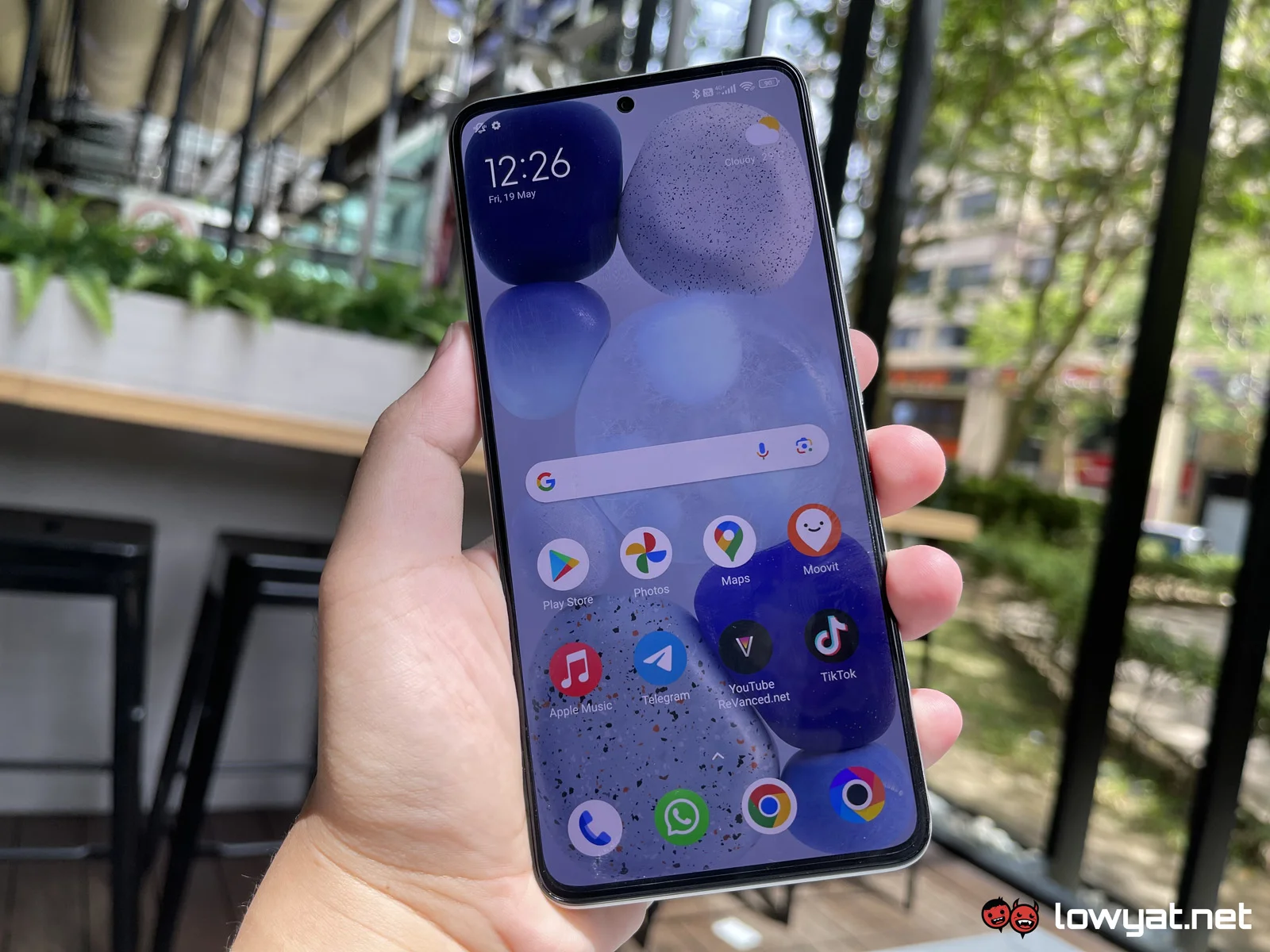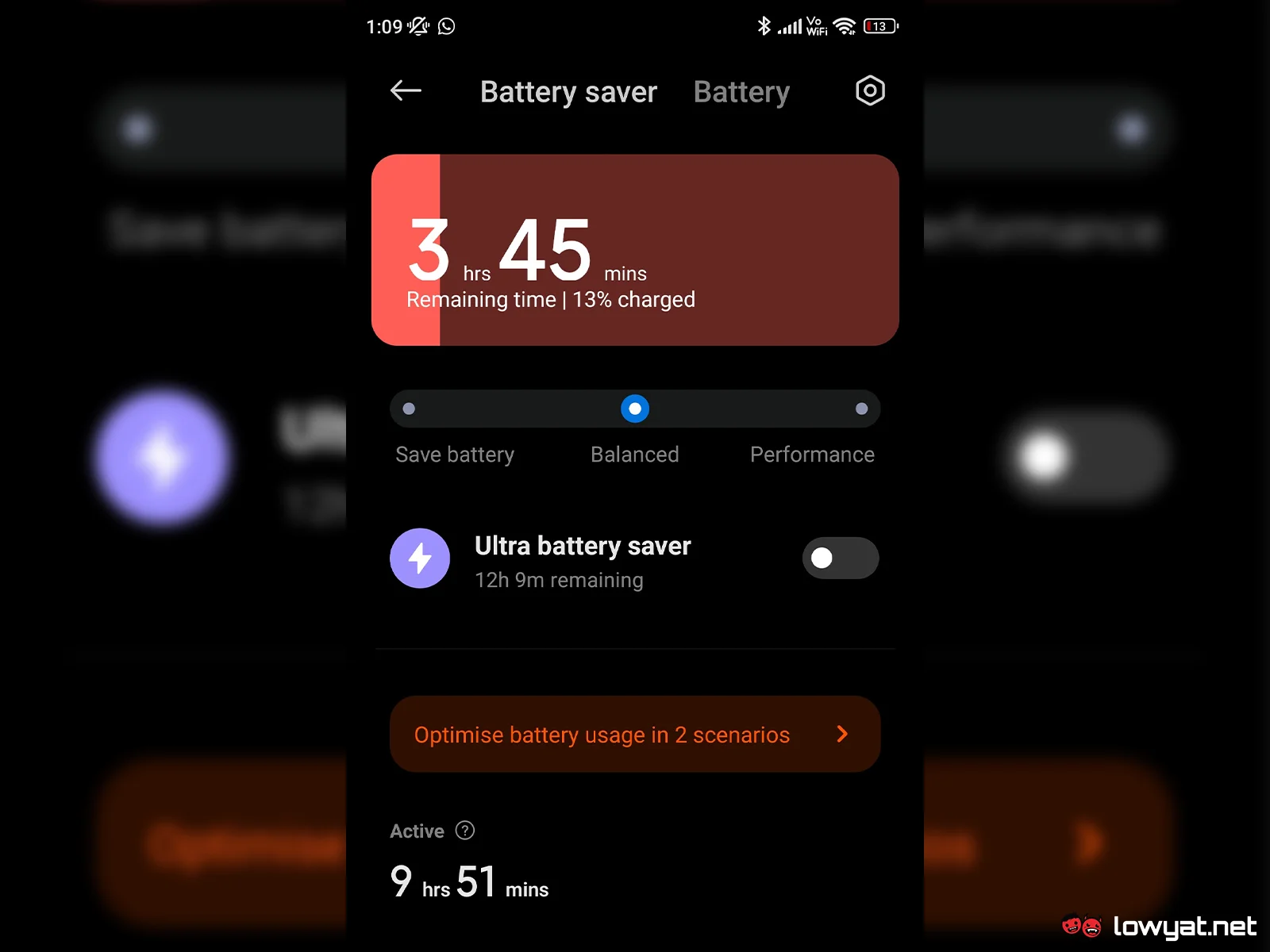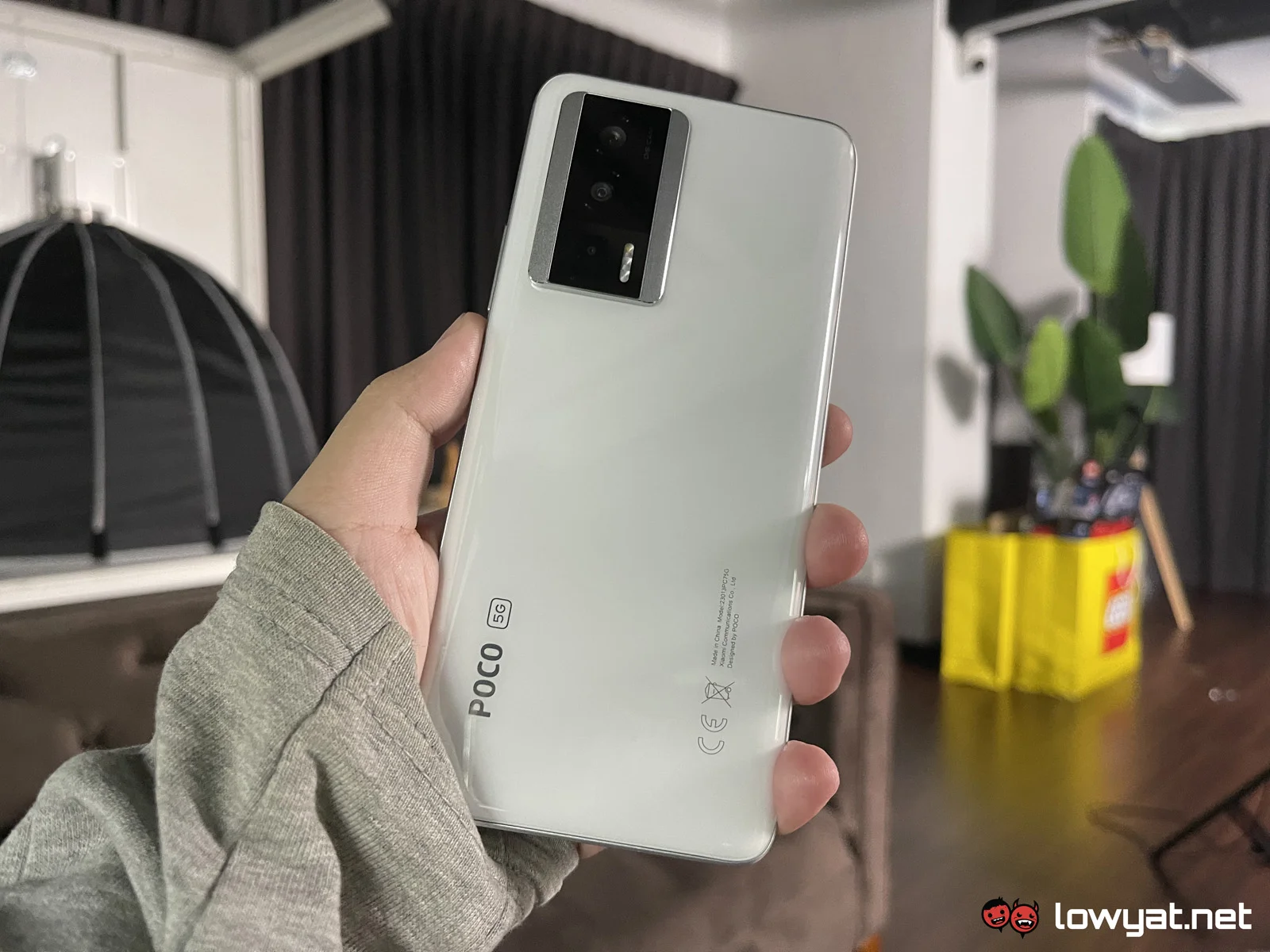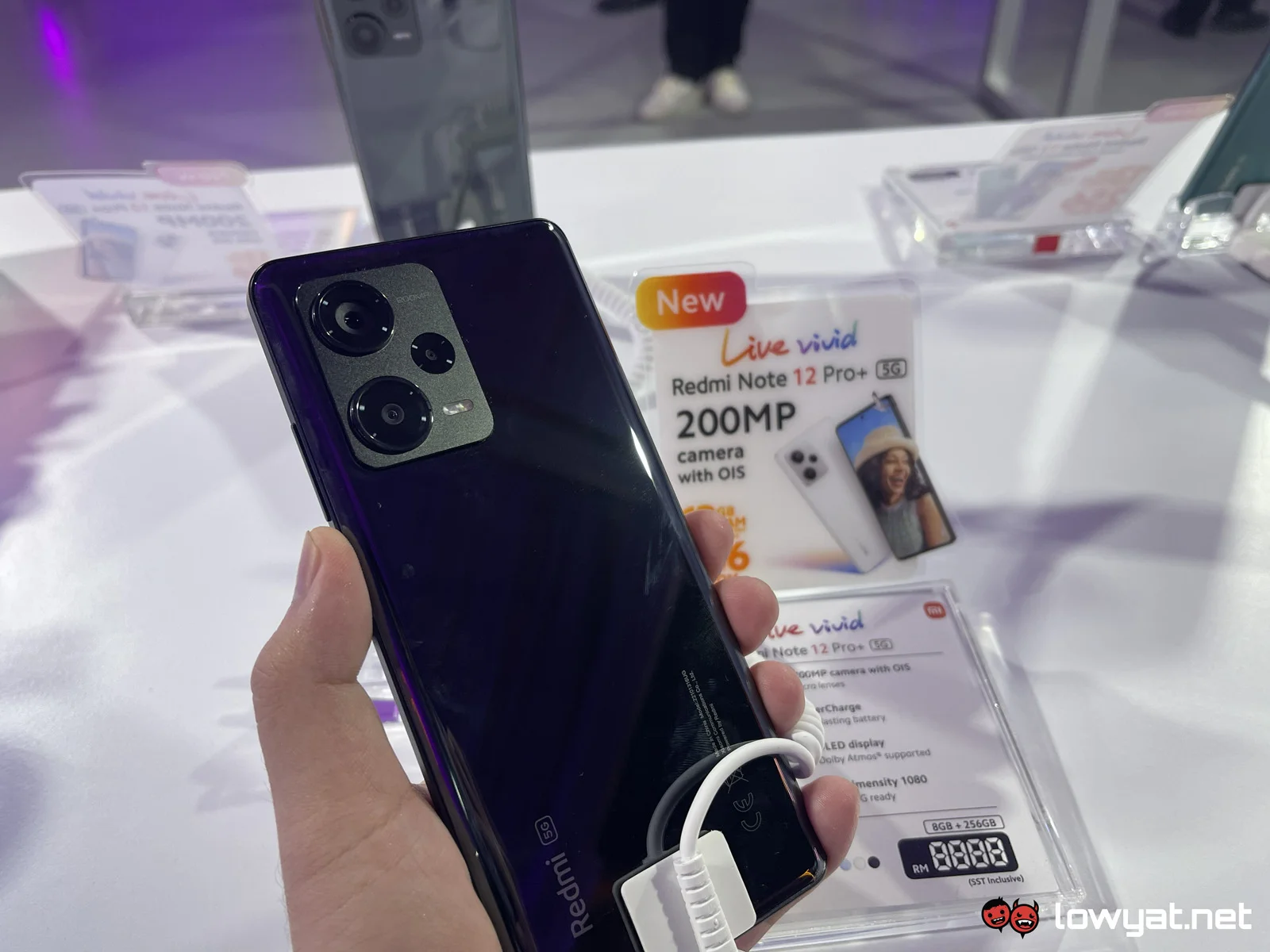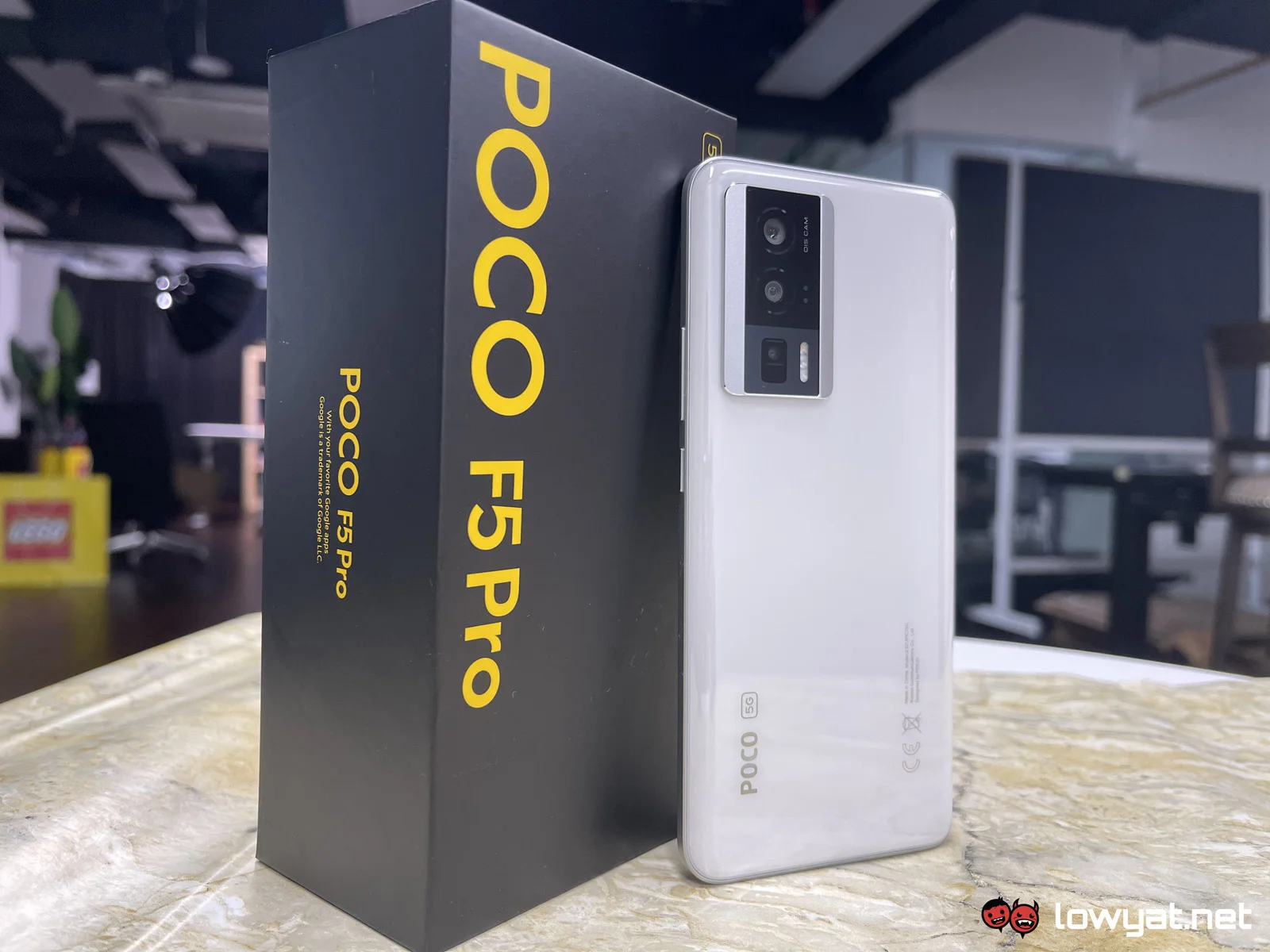Specifications
The POCO F5 Pro features a last-gen flagship chipset from Qualcomm, the Snapdragon 8 Plus Gen 1. This is paired with up to 12GB of RAM and 512GB of storage. It comes with 5G and Wi-Fi 6 support, protected by IP53 dust and water resistance, and has a big 1440p 120Hz AMOLED display. Powering it is a sizeable 5,160mAh battery with support for 67W wired and 33W wireless charging.
Looks & Functionality
The POCO F5 Pro sports a big 6.67-inch display that is refreshingly flat, which I love, and goes against the grain as devices in the premium mid-range category usually like to go for curved edges, to my chagrin. It’s a bright screen that’s reasonably usable in most outdoor situations and does offer vivid colours. Being a 1440p display, it’s slightly sharper than the typical 1080p resolution but in real-world use, the difference is barely noticeable — still, it’s a nice extra perk to have. The bezels are thin enough that I don’t have much to complain about but I would have preferred a uniform bezel design instead of the slightly thicker chin.
Extremely prone to fingerprint smudges.
The rear panel of the POCO F5 Pro is shiny glass while the frame is made out of polycarbonate that is painted to look like metal. While the glass back does give it a somewhat premium feel, it’s extremely prone to fingerprint smudges and is quite slippery, so unfortunately, this is the kind of phone that needs to be used with a cover for peace of mind. The camera island is made of a big glass rectangle that houses all three cameras. With no individual camera bumps, it feels a bit more secure to use the phone face up on a table. Both the volume keys and power button are clustered on the right side of the device while the SIM slot is positioned at the bottom, with an IR blaster on top. Additionally, it rocks dual stereo speakers placed on the top and bottom. For unlocking, it offers an under-display fingerprint scanner which is reasonably quick but if you have sweaty hands, you’re in for a hit-or-miss experience with it.
Performance & Battery
When it comes to performance, it benchmarks just as high as you would expect from the Snapdragon 8 Plus Gen 1 chipset, although it does have a tendency to significantly overheat when under a heavy continuous load. This means that intensive use of graphics-heavy games can easily cause it to thermal throttle.
The battery life was honestly a disappointment given that it does have a slightly bigger battery than most phones. While regular use could still yield an all-day battery life, it’s not a device that I would be comfortable bringing about for two days without charging unless I barely use it.
Our YouTube video endurance test, set at about 25% brightness and volume, shows that the POCO F5 Pro lasted just shy of 10 hours. That’s not exactly bad and is more than enough for most people to use for an entire day, but it puts you in a bad spot if you leave the house the next day without charging it up first. Commendably, the 67W charging is impressively fast and can give the phone enough juice to last the day with just a quick morning top-up. It’s also nice to see wireless charging, at a relatively fast speed as well, on a phone in this price range.
Camera
Specs-wise the POCO F5 Pro is equipped with a triple-camera rear setup consisting of a 64MP primary camera, an 8MP ultra-wide, and a 2MP macro lens, while the front cutout houses a 16MP selfie shooter. Even though most of the phone’s components are just barely high-end enough for it to be dubbed a flagship phone for the brand, the cameras are clearly where POCO cut corners in order to bring it down to an affordable price. The main camera isn’t exactly a potato, but it’s barely any better than some recent budget phones in the RM1,000 price range. It’s not very sharp unless there’s ideal outdoor lighting — anything less will result in blurry photos. With that, it’s no surprise that night photos are atrocious with terrible blooming for any light source. Even in most outdoor settings, photos can seem dull and blown out. Last but not least, the macro lens is really only there as a token sensor; you’re better off using the main camera and then zooming into the photo.
Camera Samples
Competition
Xiaomi 12T Pro
The Xiaomi 12T Pro is a flagship device that’s also running on the Snapdragon 8 Plus Gen 1, but unlike the POCO F5 Pro, its internal storage configuration tops out at 256GB, so the latter wins in this aspect. It sports a 6.67-inch 120Hz AMOLED display with a resolution that’s somewhere in between 1080p and 1440p. For the camera setup, it features a 200MP main camera with OIS, an 8MP ultra-wide, and a 2MP macro lens. It is powered by a slightly smaller 5,000mAh battery, but its charging speed is almost twice that of the POCO at 120W. That being said, it unfortunately lacks wireless charging. Pricing-wise, the 12T Pro did retail starting from RM2,699 at launch, but given that it was released last year, the price should be more comparable to the POCO now.
Redmi Note 12 Pro Plus 5G
I’d like to throw in a curveball by comparing it to a device from another Xiaomi sub-brand, the Redmi Note 12 Pro Plus 5G. Admittedly, it’s running a much slower MediaTek Dimensity 1080 chipset, but if you’re a light user who doesn’t need much processing power, then this might be a viable and cheaper alternative compared to the POCO. Paired with 8GB of RAM and 256GB of storage, it supports 5G, Wi-Fi 6 and uses a 6.67-inch 1080p AMOLED display with a 120Hz refresh rate. For photography, it has a 200MP sensor with OIS along with an 8MP ultra-wide, 2MP macro lens, and a 16MP selfie shooter up front. Just like the 12T Pro, it has a 5,000mAh battery and lacks wireless charging, but it makes up for it with support for 120W wired charging. Retailing at RM1,599, you could save a bit of money for similar specs if you don’t mind the lower-end SoC.
Conclusion
The POCO F5 Pro is in a grey area as to whether or not it’s a good phone for a good price. Even though it offers a lot of high-end specs, none of its features are bleeding-edge nor does it have a true flagship level camera. It’s a phone that feels like a little too late; it would have been considered a spectacular budget flagship if it’d come out in 2022, but in 2023, you could probably find much better high-end flagships from last year at a current price point similar to the POCO.
